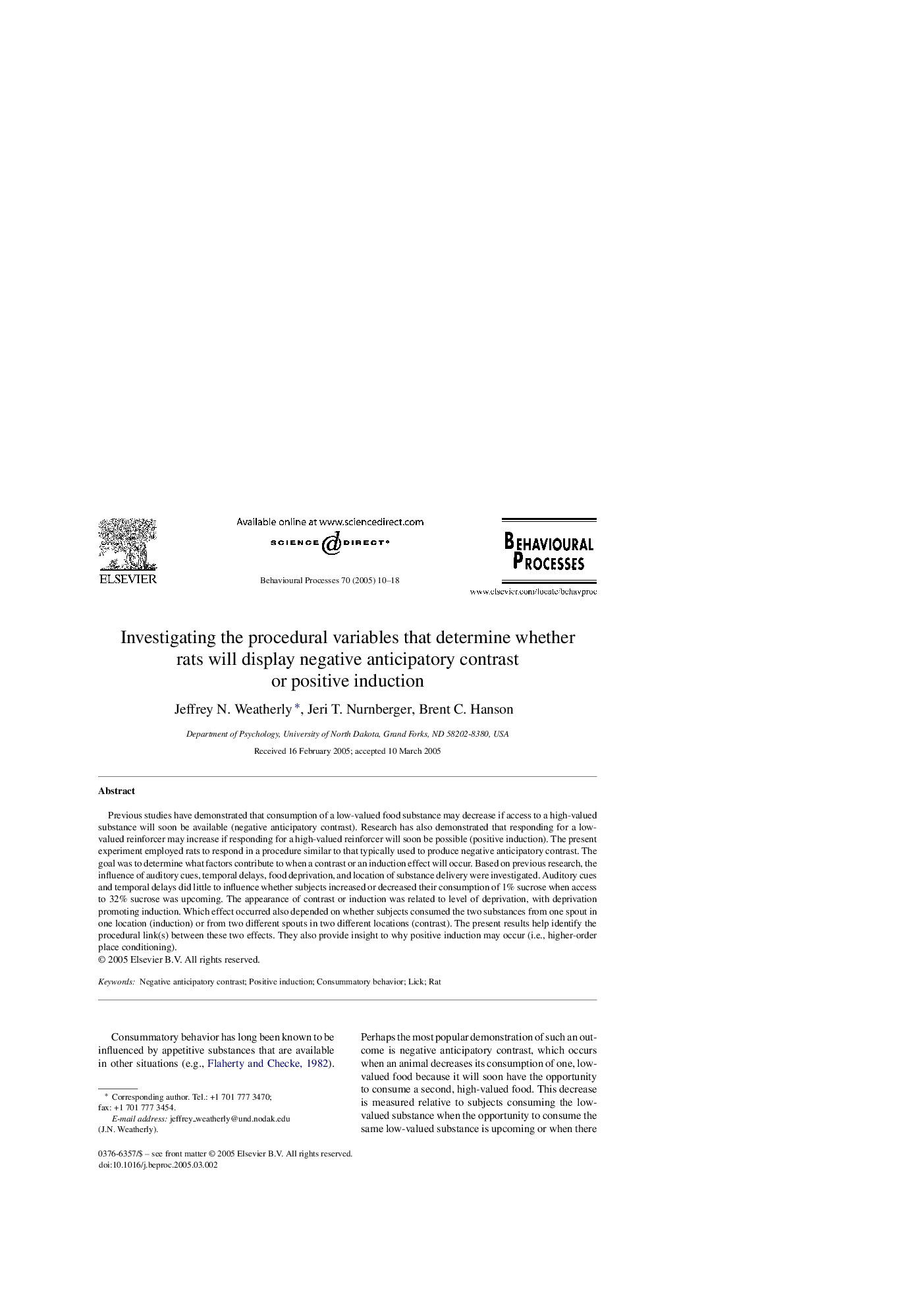| Article ID | Journal | Published Year | Pages | File Type |
|---|---|---|---|---|
| 8977443 | Behavioural Processes | 2005 | 9 Pages |
Abstract
Previous studies have demonstrated that consumption of a low-valued food substance may decrease if access to a high-valued substance will soon be available (negative anticipatory contrast). Research has also demonstrated that responding for a low-valued reinforcer may increase if responding for a high-valued reinforcer will soon be possible (positive induction). The present experiment employed rats to respond in a procedure similar to that typically used to produce negative anticipatory contrast. The goal was to determine what factors contribute to when a contrast or an induction effect will occur. Based on previous research, the influence of auditory cues, temporal delays, food deprivation, and location of substance delivery were investigated. Auditory cues and temporal delays did little to influence whether subjects increased or decreased their consumption of 1% sucrose when access to 32% sucrose was upcoming. The appearance of contrast or induction was related to level of deprivation, with deprivation promoting induction. Which effect occurred also depended on whether subjects consumed the two substances from one spout in one location (induction) or from two different spouts in two different locations (contrast). The present results help identify the procedural link(s) between these two effects. They also provide insight to why positive induction may occur (i.e., higher-order place conditioning).
Keywords
Related Topics
Life Sciences
Agricultural and Biological Sciences
Animal Science and Zoology
Authors
Jeffrey N. Weatherly, Jeri T. Nurnberger, Brent C. Hanson,
